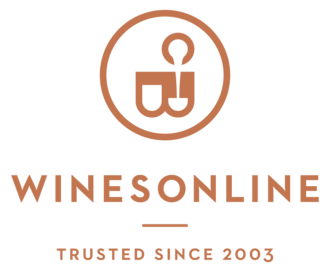Add description, images, menus and links to your mega menu
A column with no settings can be used as a spacer
Link to your collections, sales and even external links
Add up to five columns
Add description, images, menus and links to your mega menu
A column with no settings can be used as a spacer
Link to your collections, sales and even external links
Add up to five columns
Buy the Right Wine: 4 Ways How Not to Use Vivino
January 10, 2021 6 min read

If you have the slightest interest in wine, you probably would have heard of Vivino. The Vivino app allows you to scan a label and instantly get access to peer reviews. Vivino has an extensive database of wine reviews and gives power to the consumer to make an informed purchase. With the app, you no longer need to feel hapless in the face of hundreds of wines or subject yourself to the retailer’s whims and margin considerations.
In our Guoco Tower bottle shop, we are seeing more customers whip out their phones to snap and check ratings and reviews on Vivino. It is great to see people show keen interest in what they drink. Third party affirmation definitely helps convince our customers of their drink choices. In a way, it makes our job easier too especially when we have busy days and cannot attend to everyone at the same time.
But a tool is only as good as its user. When we over rely on tech but do not correctly process the information we are presented with, unintended consequences can happen. With the increased usage of the app, it is important now to point out how wonderful Vivino is in helping consumers choose wines, but only if used properly. Otherwise, it will be a missed opportunity for the user to really “buy the right wine” as the app’s slogan promises. Based on observation of our customers’ interaction with the app, I would like to share 4 ways on how users may not be using Vivino correctly.
1. OVER-RELIANCE ON STAR RATINGS
For the uninitiated, Vivino ratings are given by consumers like you and me rather than professional wine critics. Wines are given star ratings between 1 and 5. For the really picky sort and those who are decidedly undecided, you can choose to award the wine with half stars, like 3.5 stars. It is important to note though that there is not a fixed set of benchmarks to interpret what each star means, other than 1 roughly translating to skip the wine, and 5 being wow, amazing or any other superlative one can think of. So one person’s 3 stars could easily be another’s 4 and vice versa.
For famous wines with a lot of followers, Vivino reviews typically number by the thousands. The problem of different rating interpretation is mitigated by the law of averaging. You will notice that these famous wines usually all rate above 4 stars. Any wine rated above 4 is great. But these same wines also regularly garner professional ratings of 90+ (over a 100 point scale) from the likes of Wine Advocate, James Suckling, Wine Spectator etc. So having star ratings above 4 on Vivino don’t really tell us more than what we already know about these wines.
On the other hand, Vivino really comes in handy when you are looking at lesser-known wines which do not get much coverage from professional critics. I think it is great that we can rely on the wisdom of the crowd to get an idea of how such wines are received. For obscure labels though, it is important to point out that extreme ratings from a small pool of reviewers can sway the final result. Think over-enthusiastic friends and jealous neighbours.
For myself, as a rule of thumb, I pay more attention to a label’s rating only if there are at least 100 reviews given. In this way, I have a higher chance of avoiding the friend/enemy situation and get a more balanced picture. 100 is an arbitrary number. You can go for 200 if you like, but I find for lesser-known labels, it can be quite hard to get 200 reviews. I am comfortable with 100 reviews as I have been able to pick up interesting labels using this threshold.
2. IGNORING RATINGS TREND
Rating tells you where you are. Trend tells you where you are going. Unless it is a newly launched wine, chances are multiple vintages have already been reviewed. There is much to be gleaned from reviewing the trends. A wine with rising ratings for each successive vintage suggests improving/great winemaking. The reverse may suggest otherwise. I am always happy to try lesser-known labels. For one, it is fun to drink something new. For another, prices rise slower than ratings so I am getting more bang for my buck on these wines than on blockbusters. Not looking at the trend means you are missing out on the fun and the chance to save some money.
3. NOT PAYING ENOUGH ATTENTION TO REVIEWS
A large part of why I think Vivino is a useful tool is the sheer number of consumer reviews it has on its database. There were probably only a few occasions where I did not get a result from my search. Consumer reviews are great in that they are written from the consumer’s perspective. That means less technical jargon or overly detailed description of soil types, rainfall and yields. And more relevant information like taste and food pairings. I find consumer reviews to be immensely helpful in picking a new label as it helps flesh out the wine. To focus exclusively on ratings without reading the reviews is like rushing through a tour itinerary without pausing to take in the essence of a place.
4. PAYING TOO MUCH ATTENTION TO REVIEWS
This last point sounds like a contradiction to the previous point. But it is really important to understand this. A lot of times, I see customers reading descriptives like bold, red fruits, oak etc in reviews and decide that they will buy or skip the wine. If you look at wine characteristics long enough, you will find that they can sound rather generic after a while. There does not seem to have much difference based on descriptives alone to be able to objectively set 2 wines apart. Taste profiles by nature happen in a spectrum. There is not a single point where a wine becomes bold or show red fruits rather than black. Even though Vivino presents a wine’s characteristics on a slider, it clearly has its limitations in adequately telling the reader whether he will like it or not.
Just as it is impossible to describe how an apple tastes to someone who has not eaten an apple before, descriptives alone won’t help much if you haven’t had this type of wine before. The experience of tasting gives context to these descriptives. I honestly feel that the best way to discover what wines you like is to find wines that are representative of a region’s varietal style and try as many of them as possible. In this way, you build up an internal knowledge base of how a varietal from a particular region typically tastes. For example, if you have tasted representative Chiantis, Brunellos or Pomerols, the Vivino reviews become really useful in helping you pick labels that show these characteristics. The chance of you drinking the “right” wine improves tremendously. A wine with a taste profile you dislike won’t give you much pleasure even with a 5 star rating.
The 4 points I mentioned above may seem daunting at first. But if you are keen to develop an understanding of your own palate and with that, drink better wines that you enjoy in the long run, it is actually not difficult. First, speak to a reputable wine merchant you trust to recommend wines that are representative of whatever region or style you are interested in discovering. Note the characteristics of these wines and decide if you like them or not. From there, make use of Vivino to help you discover similar wines. With a structured approach and patience, you will be amazed at how fast you can come to appreciate wine.
We have adopted the approach I mentioned here and identified labels that will help you discover your drinking style, using Vivino as a guide. You can click here to view the selections. All the wines here have been rated 4.0 and above. The Vivino 4.0 and Above Selections is an evolving list and we update labels as we discover them. Do check back from time to time for the latest updates or if you need inspiration.
I hope you find this article useful and discover some interesting labels along the way. Do leave your comments below if you have some ideas to share or points to clarify. Stay safe and have fun as always.
Sante,
Wong Peng Chung (Kenny)
Founder and Chief Wine Drinker
Leave a comment
Comments will be approved before showing up.
Subscribe
Sign up to get the latest on sales, new releases and more …

